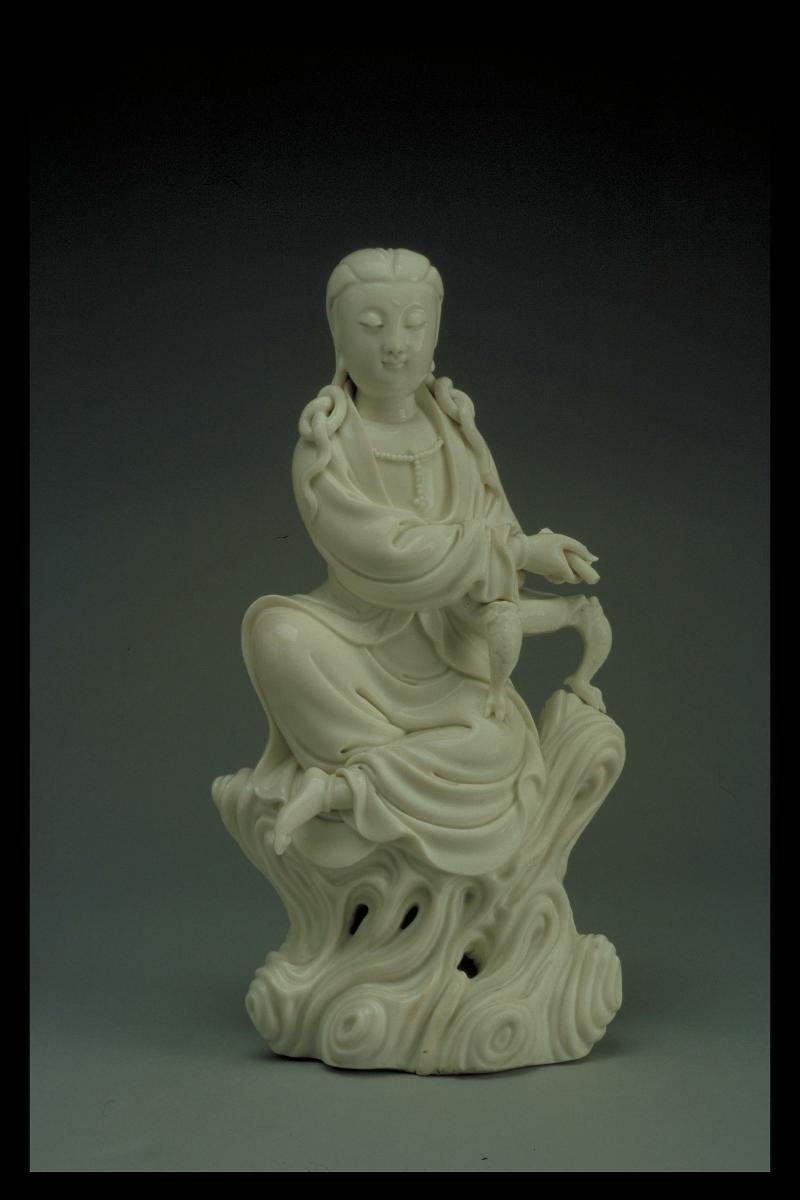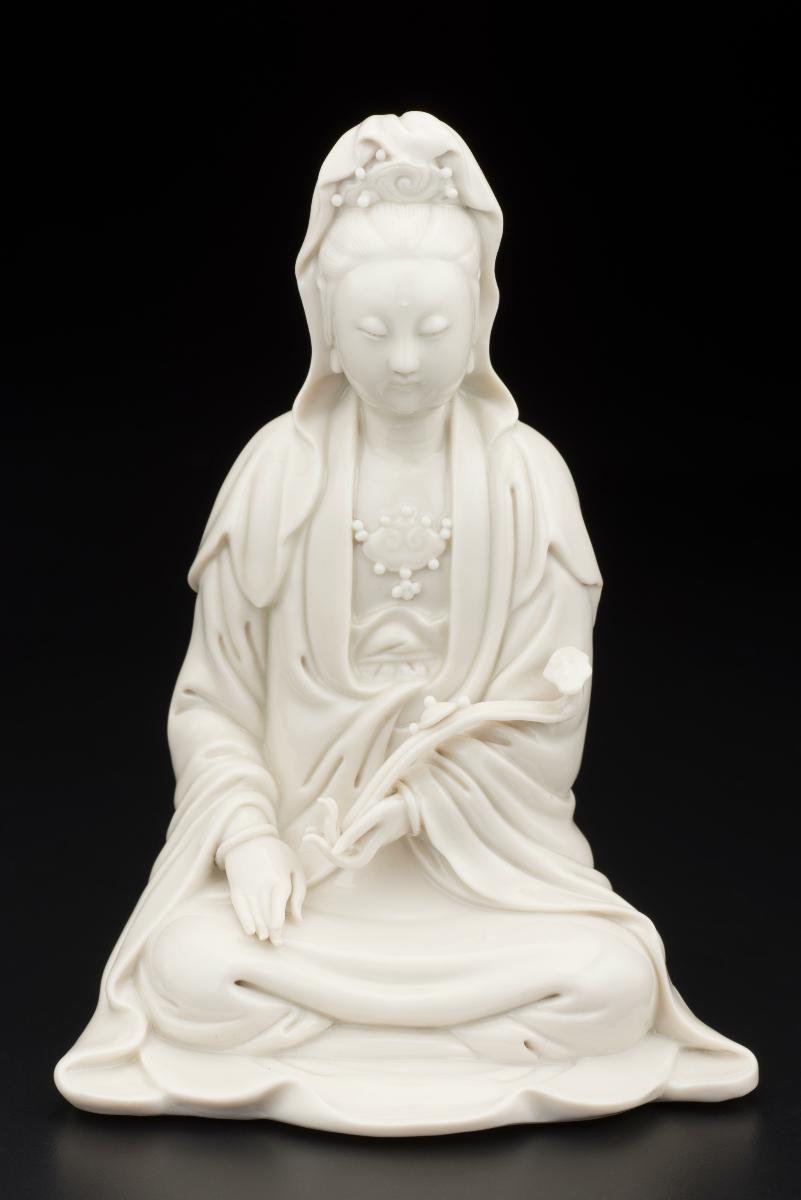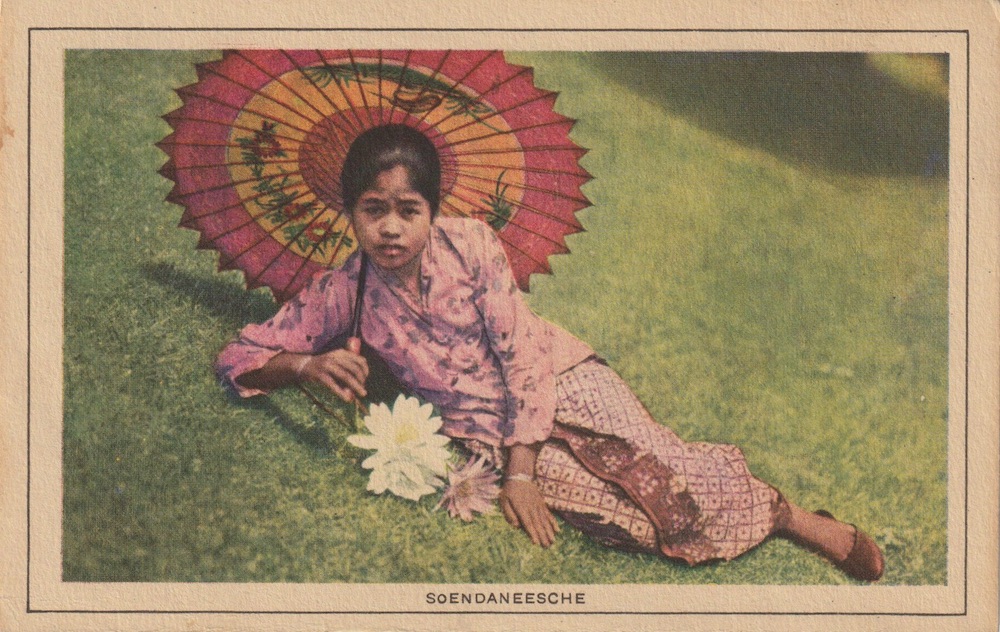This youthful female image of Guanyin may be among the earliest of Dehua images. She is seated on a rock in the posture of ‘royal ease’ ('rajalalitasana') with a 'meiping'-shaped vase on an adjacent outcrop. Her hair and facial features are finely incised. The clear, greenish- cream tone of the glaze is distinctly visible where it pools in the recessed folds of drapery and rockwork. ‘Guanyin’ or 'Guanshiyin’ is the ‘Bodhisattva who hears the cries of the world’. The earliest interpretations of the Guanyin as female appear in the Song (960-1279) rock-carvings of Northern Sichuan. Youthfulness of this new enhanced female form, enchanted worshippers who popularised the cult of Guanyin. In Mahayana Buddhism, a bodhisattva is one who has achieved salvation but chooses to forgo nirvana out of compassion for the suffering others. Meiping refers to a type of Chinese pottery vase inspired by the shape of a young female body.

















